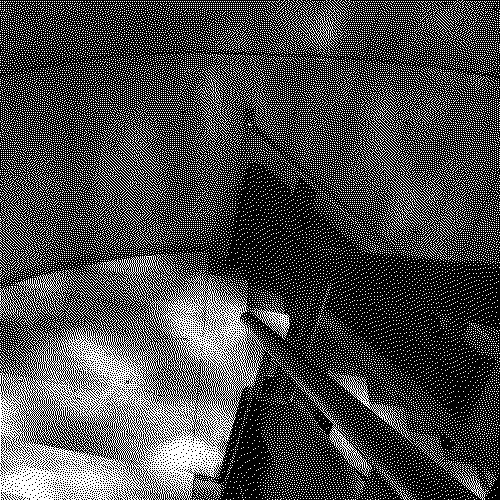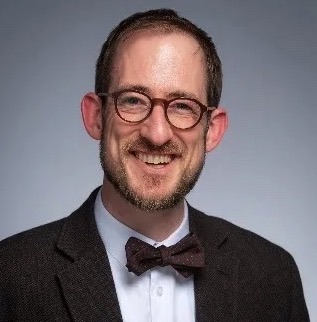Yale Center for British Art

This feature presents a series of images inspired by the renovation and temporary closure of the Yale Center for British Art, New Haven, a building designed by the American architect Louis I. Kahn. I wanted to make moving images because Kahn’s aesthetic intentions are tied up in movement. Having spent a year working in the museum, I became aware that the building is subtly animated by air, light, and human movement. When the museum closed in 2015, I wanted to use this special opportunity to record such motion: the art and temporary walls were removed, revealing the full expanse of the galleries. The exposure of the building’s bones meant that Kahn’s intentions could be read more clearly. Architecture and photography have a long and entwined history. This feature presents a different way of capturing Khan’s architecture. What follows is a description of each of the animated images, which I took in response to this fleeting moment in the building’s history.
Gallery Shutters shows the building with nothing on the walls but the light. Emptied of the art collection assembled by Paul Mellon which usually hangs here, sunlight became as intensely felt as if one were standing under the oculus of the Pantheon. But the space is no Pantheon. It was as if one were standing in a giant’s fabric-lined steamer trunk, a series of linen-lined rectilinear volumes with construction detritus collecting like fluff in the corners. Even as a construction site, the building felt tidy.
Library Light portrays an electric light twisting and drifting within the limits imposed by its wires after it was jolted by human contact. As Kahn explained when discussing the Kimbell Art Museum not long before his death in 1974, he intended the static geometry of the building’s structure to provide a framework for natural motion, both articulating it and giving it order. “Structure is the giver of light”, he said.1 This idea was not alien to American art of the period: it can be found in the gentle movement of an Alexander Calder mobile, for instance, inscribing arcs in the air, driven by physical forces but controlled by the limits of its armature and wires.
Stair: Passing Clouds explores Kahn’s hope that austere, monumental surfaces would make light perceptible, a phenomenon Kahn had first comprehended as the sunlight played over the masonry vaults of Roman ruins. Simple, orderly geometry would set off the complex movements of natural light as it changed with the seasons and climate. Kahn wanted the weather and time of day to be sensed within the building. He aimed to connect the building’s occupants with the world around them rather than isolating them from it—a humanist impulse appreciated by his Yale University patrons. He realized that, paradoxically, the more rigid the geometry, the more human the space could become.
Fan shows the space animated in a new way by forced air. Construction imposed its own geometries and movements on the building. We often write about architecture as if it were static, frozen in the moment of its completion; that is, the moment when the architect’s intentions are most clearly expressed, before the inevitable replacement of parts or modification for unforeseen uses begins. Part of the purpose of this conservation project has been to address the accretive changes to the building since it opened in 1977—to reverse some patinas and to preserve others; to remove off-the-shelf components such as exit signs and hardware that do not embody Kahn’s aesthetic. It has also been possible to open up the full length of the so-called Long Gallery, an idea initially conceived by the first Director, Jules Prown, but not realized until now.
Concrete Patina Scroll shows that the materiality of buildings also has a temporal element. The movement of light, the presence of life, the running of water over the surfaces as it returns to the earth—these all leave their marks. The camera intensifies the panning motion of the viewer’s eye over a surface weathered by decades of exposure to the climate. The usual frameworks of art-historical analysis can have limitations when dealing with buildings. Eyes may burn metaphorical holes, but they leave no physical trace. The movement of people in the space of the Center does leave a trace; buildings are shaped by their users, in slow, subtle ways. The condensation of human breath, the catching of shoes in holes in the travertine, the leaning of chairs against concrete—all contribute to this marking.
In Empty Gallery, wire on stands and partially inflated plastic ventilation tubes occupy stripped spaces in the process of transformation. Change did not bother Kahn. It was natural and inevitable. “The architect cannot camp in his building”, he told Prown.2 The building’s structure merely set constructive limits on the range of change that could take place within it. Change occurred both in the daily changing of light, weather, and season, and in the gradual modification of the space by human activity. Kahn was adamant that in his work there should be “Nothing static, nothing as static as an electric bulb, which can give you only one iota of the character of light.”3 However, once a building becomes regarded as a masterpiece, change becomes problematic. How do we preserve Kahn’s work, while embracing his attitude towards change?
Highlights and Leaves captures the way the placement of trees was designed to frame the building with rustling leaves, their dancing shadows emphasizing the slowly brightening or dulling sheen of the rigid rectangular panels (Kahn insisted that the surface be matt and non-reflective—an effect he likened to that most British of building materials: lead). The frame of dancing leaves flutters away in the autumn and for much of the year is not there. With the arrival of the harsh New Haven winter, the steel’s sheen becomes dull and dead, and the snow drifts down in front of gaps in the steel cladding, where plate glass releases an incandescent glow into the dark.
The building is not to be contemplated in the abstract only—it is choreographed. A building grows and ages like the human life within it—sometimes unpredictably. In Kahn’s work, rigid geometrical abstraction is at once aesthetic frame and container of human activity. Kahn unfortunately died before he had much opportunity to describe the YCBA. Luckily, his descriptions of the nearly contemporaneous Kimbell Art Museum give us some idea of his intentions: “So the museum has as many moods as there are moments in time, and never as long as the museum remains a building will there be a single day like the other.”4
4Johnson, Light is the Theme, 16.
About the author
-
 David Lewis is Postdoctoral Research Associate at the Yale Center for British Art. David received his doctorate from the University of Oxford in 2014 and is currently researching British architecture in the first decades of the twentieth century
David Lewis is Postdoctoral Research Associate at the Yale Center for British Art. David received his doctorate from the University of Oxford in 2014 and is currently researching British architecture in the first decades of the twentieth century
Footnotes
-
1
Nell E. Johnson, Light is the Theme: Louis I. Kahn and the Kimbell Art Museum (New Haven and London: Yale Univ. Press, 2011), 21. ↩︎
-
2
Jules Prown, The Architecture of the Yale Center for British Art (New Haven and London: Yale Univ. Press, 1977), 10. ↩︎
-
3
Johnson, Light is the Theme, 16. ↩︎
-
4
Johnson, Light is the Theme, 16. ↩︎
Imprint
| Author | David Lewis |
|---|---|
| Date | 1 December 2022 |
| Category | Look First |
| Review status | Peer Reviewed (Editorial Group) |
| License | Creative Commons Attribution-NonCommercial 4.0 International (CC BY-NC 4.0) |
| Downloads | PDF format |
| Article DOI | https://doi.org/10.17658/issn.2058-5462/issue-02/dlewis |
| Cite as | Lewis, David. “Yale Center for British Art.” In British Art Studies. London and New Haven: Paul Mellon Centre for Studies in British Art and Yale Center for British Art, 2022. https://doi.org/10.17658/issn.2058-5462/issue-02/dlewis. |